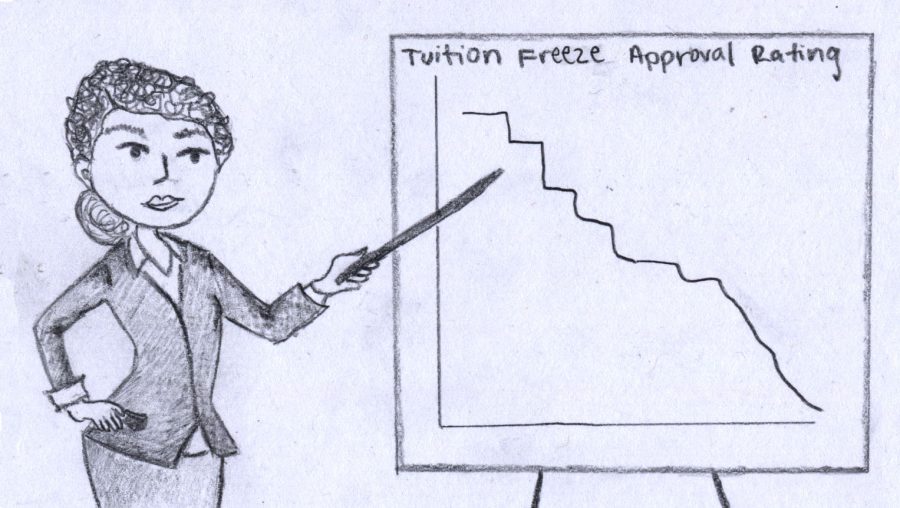April 30, 2014
Editorial Staff Opinion
With an American job market that has seen its fair share of struggles lately, earning a college degree has become increasingly important.
Unfortunately for students, the cost of this degree has become less affordable year after year.
After a $1 billion surplus was discovered for the next UW system budget, Gov. Scott Walker recommended a two-year extension on the current tuition freeze, which was implemented in July 2013, through the 2015-16 school year.
This gesture will briefly keep college tuition at a somewhat reasonable level, but if no long-term solution is found in the meantime, it will do more harm than good for UW system students.
In the 2000-01 school year, Wisconsin enacted a tuition freeze as well, but no solution was put into place to help slow increasing tuition costs in the future.
Following the end of that tuition freeze, UW-Whitewater tuition costs rose 7, 11, 14.5, 12.2 and 9.4 percent respectively over the next five years, according to data from the U.S. Department of Education’s 2012-13 Integrated Postsecondary Education Data System Survey collected by Collegecalc.com.
Currently, for a full-time student living in the Residence Halls with no meals, tuition sits at $5,589 per semester, according to the UW-W website.
If tuition costs followed that trend after the 2015-16 proposed freeze, tuition would increase to over $9,000 after the fifth year. For a standard undergraduate degree, this would be an increase of nearly $7,500 per year.
Some success has been seen with extending freezes for long periods of time. During the recession, Maine enacted a long-term tuition freeze for its community colleges, freezing them eight out of the last 14 years.
Its statewide tuition costs, which were the most expensive in the country during the 1990s, fell to 23rd-most expensive in 2012, according to the Lumina Foundation.
Long-term tuition freezes have their drawbacks, however, which is why many university systems avoid them.
With the tuition frozen, the university’s needs for a budget increase still exists. This is mainly due to decreasing percentage of state tax support for public university budgets, along with increasing costs.
For example, in the past 10 years, state tax support for the UW system budget has decreased from 27.33 percent to 19.24 percent, although the total amount of money contributed is still similar, according to the UW system 2012-2013 Fact Book. The University of Michigan’s percentage has fallen from 78 percent in 1960 to 17 percent in 2012, according to the University of Michigan Office of the Vice President of Communications website.
An increase in budget and decrease in state support and tuition profit causes issues for the university.
For this tuition freeze, cost-cutting techniques would most likely need to be implemented, such as cutting certain programs, or hiring more inexpensive – and thus, more inexperienced – professors.
One way for Walker to create long-term relief after the tuition freeze would be to make the UW system a higher priority in the budget, and provide them with more money to combat universities’ increasing financial needs.
The UW system educates 181,000 students according to their website. This is enough people to warrant a higher rank in the budget.
This would provide a way for the universities to keep tuition at an affordable amount while being able to keep up with necessary budget increases and provide their students with a quality college experience.
Without a long-term solution, Walker’s recommended tuition freeze would be similar to a doctor treating a patient’s symptoms and ignoring the underlying disease.
If the interests of the students are truly at the heart of this tuition freeze, it is absolutely essential that a long-term solution accompanies it.


